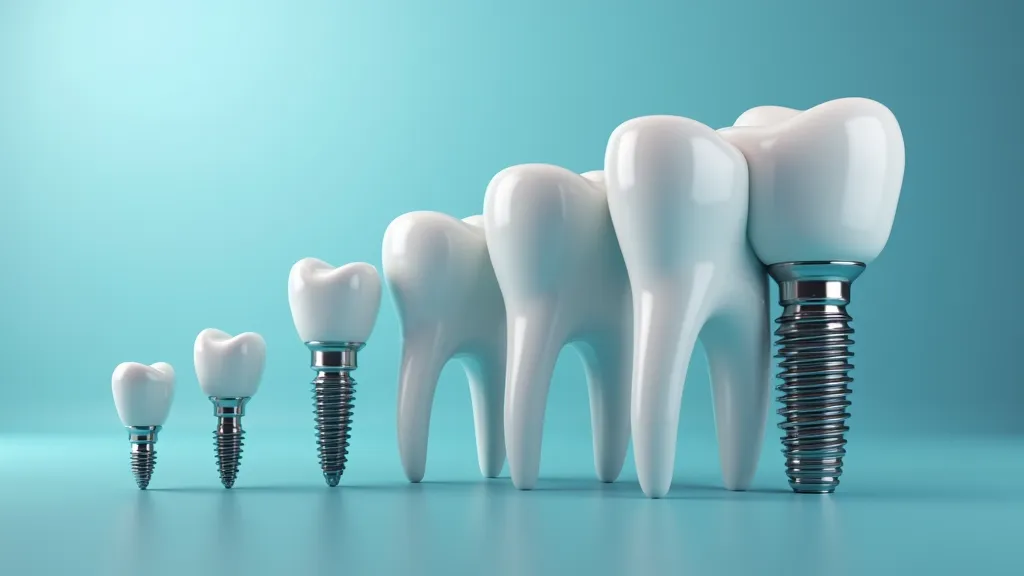This comprehensive guide explores dental implants, focusing on good options. It covers benefits, costs, and resources for finding affordable treatments in various countries. Learn about the procedures involved, pricing ranges, and where to find reputable clinics for dental care.

Dental implants have revolutionized the field of dentistry, offering patients a robust solution for tooth loss. Unlike traditional dentures or bridges, dental implants provide a stable and durable foundation for replacement teeth, enhancing both functionality and aesthetics. This comprehensive article delves into the intricacies of good dental implants, including their benefits, costs, and how to access affordable options across different countries. We will also explore the procedural aspects of dental implants, how they compare to other tooth replacement options, and the latest advancements in implant technology that promise to enhance patient experiences.
Dental implants are artificial tooth roots typically made from titanium, a biocompatible material that integrates well with bone. This unique property allows the implant to bond with the jawbone—a process known as osseointegration. The process of getting dental implants involves several stages, including:
Each of these stages is crucial for the success of the dental implant and requires careful planning and execution by skilled dental professionals.
Good dental implants offer numerous advantages that surpass traditional alternatives. These benefits include:
Additionally, dental implants can positively impact oral health by making it easier to maintain good hygiene practices. Unlike bridges, which require alteration of adjacent teeth, implants stand alone and do not compromise the integrity of surrounding teeth.
The cost of dental implants can vary significantly based on factors such as location, the complexity of the case, and the specific clinic chosen for treatment. Below is a detailed comparison of dental implant costs in various countries, reflecting the average price ranges that potential patients can expect:
| Country | Currency | Price Range |
|---|---|---|
| United States | USD | $3,000 - $6,000 |
| United Kingdom | GBP | £2,000 - £2,500 |
| Australia | AUD | AU$3,500 - AU$6,500 |
| Canada | CAD | CA$3,000 - CA$5,500 |
| Spain | EUR | €1,500 - €2,500 |
| Chile | CLP | CLP$800,000 - CLP$1,500,000 |
| Mexico | MXN | $15,000 - $25,000 |
| Colombia | COP | $2,000,000 - $4,000,000 |
| Peru | PEN | S/ 3,000 - S/ 6,000 |
| Argentina | ARS | $80,000 - $150,000 |
| Brazil | BRL | R$3,000 - R$8,000 |
| Portugal | EUR | €1,000 - €2,000 |
Source: Dental Views, Atlantic Dental Group, DentaVacation, ADHP
For individuals seeking to minimize their dental implant expenses, several strategies can be employed:
By employing these strategies, patients can make significant strides in finding affordable dental implants without compromising on quality and care.
Below is a summary of various websites that provide information on low-cost dental implants, helping patients navigate their options:
| Website | Description |
|---|---|
| Dental Views | Offers low-cost dental implant solutions, detailing benefits, types of treatments, and pricing structures. Their database includes information on clinics and patient reviews. |
| Atlantic Dental Group | A comprehensive clinic website offering various dental services, including implants, with easy access to appointment scheduling and patient resources. |
| DentaVacation | A dental tourism platform that helps patients save by traveling abroad for treatments. They provide guidance on clinics, travel arrangements, and patient testimonials. |
| ADHP | Provides information on dental insurance plans, helping consumers find suitable coverage options. Their resources include comparisons of different insurance providers and plans. |
Source: Dental Views, Atlantic Dental Group, DentaVacation, ADHP
With proper care and maintenance, dental implants can last a lifetime, making them a durable solution for tooth replacement. Regular dental check-ups and good oral hygiene practices are essential in ensuring the longevity of the implants.
Most patients report minimal discomfort during the procedure, as local anesthesia is used. Post-operative pain can usually be managed with over-the-counter medications. Many patients find that the discomfort is much less than they anticipated.
While most individuals are candidates for dental implants, those with certain medical conditions, insufficient bone density, or gum disease may require additional procedures prior to implant placement. A thorough assessment by a dental professional is essential to determine eligibility.
The recovery time can vary based on individual healing rates, the number of implants placed, and any additional procedures performed (such as bone grafting). Generally, the osseointegration process takes a few months, but initial recovery from the surgery itself may take about a week.
Insurance coverage for dental implants can vary significantly. Some plans may cover a portion of the costs associated with the procedure, while others may not cover implants at all. It's essential to check with your insurance provider to understand your benefits.
Good dental implants represent a significant advancement in restorative dentistry, providing patients with a reliable and aesthetically pleasing solution for tooth loss. Understanding the associated costs and exploring various resources can empower individuals to make informed decisions regarding their dental health. As the field continues to evolve, more options will likely become available, further increasing accessibility for patients worldwide. Moreover, advancements in technology and techniques promise to improve patient outcomes and satisfaction.
Patients contemplating dental implants should seek consultations with multiple dental professionals to gain a comprehensive understanding of their options and to find a provider that best suits their needs. Being proactive in researching and understanding the dental implant process will ultimately lead to a successful and rewarding dental experience.
Disclaimer: The above information comes from online resources, and the data is as of October 2023. Dental implant prices are for reference only and may vary by region, clinic, and doctor.
1. Dental Views
2. Atlantic Dental Group
3. DentaVacation
4. ADHP